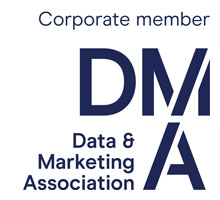The Future of Geodemographics – 21st Century datasets and dynamic segmentation
6th March 2008
Around ninety people took part in the CGG conference on the Future of Geodemographics on Thursday 6th March, with the common aim of exploring the ways in which geodemographics is likely to develop over the next ten years or so.
The participants came from a wide range of organisations - mainly information users, and primarily from the private and public sectors, together with a sprinkling of geodemographics providers. This underlined the widespread application of geodemographics – its uses are no longer confined to the business sector.
The seven presentations brought together speakers from all sides of the information industry, ranging from the data providers through to data analysts, and from the users to the regulators.
Key Themes
In his introduction as conference chair, Barry Leventhal suggested some key themes for the day, which included:
- The future evolution of geodemographics, in terms of data sources, analytical methods, mapping and visualisation techniques.
- With data on 100% of customers, are the Census and Geodemographics going to become redundant? Can we usefully combine customer data with Geodemographics?
- How are Geodemographics and customer analysis moving into real-time?
- How far can all this go, before it starts to infringe the rights of the individual?
The 2011 Census
The conference was opened by Glen Watson, who set the scene by describing how the 2011 Census is likely to be conducted and explained that ONS are applying learnings from 2001 in their design for 2011. Looking beyond 2011, Glen speculated on the different long-term options for the Census, which might involve the use of administrative registers to collect basic population statistics.
Geodemographic Futures
Representatives from four of the leading census distributors then took up the baton to give a joint presentation on how the geodemographics industry may evolve in the future. All four – Andy Bell, Stewart Dickson, Blair Freebairn and Rob Haslingden – predicted that geodemographics will continue to increase in global use and importance. They explained that in many industries there will continue to be a need for neighbourhood classifications. While interest in bespoke segmentation systems will grow, fuelled by additional data sources such as real-time purchasing behaviour, these will be supplemented by person-based classifications.
Understanding People on the Move in London
The third session focussed on the types of insights that may be generated via detailed analysis of customer data. Charles Buckingham described some of the ways in which Transport for London is using analytics to understand the travel behaviour of their customers. Using data captured via Oyster cards, complex travel patterns are being analysed across multiple modes of transport. Charles went on to explain the use of data captured from the Congestion Charge and the unique opportunity it provides to study traffic characteristics and behavioural change.
Geodemographics & Privacy
Representing the regulators, Stephen McCartney reviewed the obligations, rights and customer choices under the 1998 Data Protection Act. The rights of the individual in relation to automated decision-taking were particularly relevant to the use of geodemographics. Stephen’s talk led to an interesting discussion about whether a highly accurate geodemographic system might be so accurate at targeting that it could be regarded by the Information Commissioner’s Office as personal data.
Understanding Customers
Returning to the theme of customer analysis, the next speaker – Giles Pavey – presented a case study showing how retailers can gain a very detailed understanding of their customers through analysis of loyalty card data. His talk was based on dunnhumby’s work with Tesco and Giles explained some of the customer insights that have emerged, including a set of Lifestyle segments. Giles pointed to a use of geodemographics in combination with customer Lifestyles, to predict the Lifestyles for non-customers and help model the future performance of new stores.
Real Time Geodemographics
Peter Furness then gave a fascinating overview of the new services and business opportunities that will arise from analysing people in time and space. Peter touched on some key technology developments, such as tracking and surveillance systems, as well as virtual worlds in cyberspace, before presenting a series of case studies with a ‘real-time’ theme. Peter included a warning over privacy and data protection, before concluding with a prediction that new players will emerge that specialise in analytics for the real time spatial world.
Dynamic Mapping for Dynamic Segmentation
The final speaker, Paul Longley from UCL, gave an entertaining and visually stimulating presentation on data visualisation, using illustrations from the London Profiler web site. Paul also discussed data sharing and ethical issues, and pointed to future extensions of dynamic mapping, in areas such as dynamic integration and bespoke geodemographics.
Get the latest MRS news
Our newsletters cover the latest MRS events, policy updates and research news.










